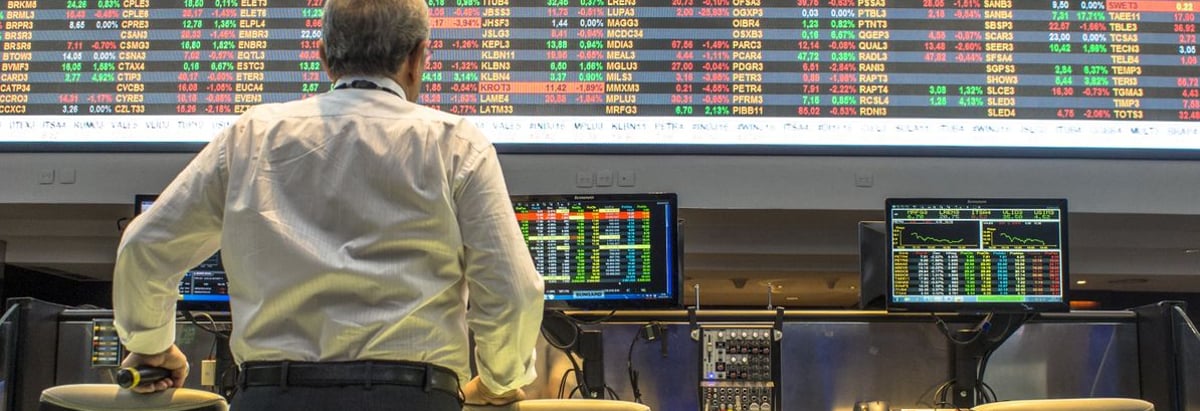- India
- /
- Capital Markets
- /
- NSEI:CARERATING
Tread With Caution Around CARE Ratings Limited's (NSE:CARERATING) 3.7% Dividend Yield

Could CARE Ratings Limited (NSE:CARERATING) be an attractive dividend share to own for the long haul? Investors are often drawn to strong companies with the idea of reinvesting the dividends. Unfortunately, it's common for investors to be enticed in by the seemingly attractive yield, and lose money when the company has to cut its dividend payments.
In this case, CARE Ratings likely looks attractive to dividend investors, given its 3.7% dividend yield and eight-year payment history. We'd agree the yield does look enticing. Remember though, due to the recent spike in its share price, CARE Ratings's yield will look lower, even though the market may now be factoring in an improvement in its long-term prospects. Some simple research can reduce the risk of buying CARE Ratings for its dividend - read on to learn more.
Explore this interactive chart for our latest analysis on CARE Ratings!

Payout ratios
Dividends are usually paid out of company earnings. If a company is paying more than it earns, then the dividend might become unsustainable - hardly an ideal situation. Comparing dividend payments to a company's net profit after tax is a simple way of reality-checking whether a dividend is sustainable. Looking at the data, we can see that 93% of CARE Ratings' profits were paid out as dividends in the last 12 months. Its payout ratio is quite high, and the dividend is not well covered by earnings. If earnings are growing or the company has a large cash balance, this might be sustainable - still, we think it is a concern.
Remember, you can always get a snapshot of CARE Ratings' latest financial position, by checking our visualisation of its financial health.
Dividend Volatility
From the perspective of an income investor who wants to earn dividends for many years, there is not much point buying a stock if its dividend is regularly cut or is not reliable. Looking at the last decade of data, we can see that CARE Ratings paid its first dividend at least eight years ago. It's good to see that CARE Ratings has been paying a dividend for a number of years. However, the dividend has been cut at least once in the past, and we're concerned that what has been cut once, could be cut again. During the past eight-year period, the first annual payment was ₹12.0 in 2013, compared to ₹19.5 last year. This works out to be a compound annual growth rate (CAGR) of approximately 6.3% a year over that time. The dividends haven't grown at precisely 6.3% every year, but this is a useful way to average out the historical rate of growth.
A reasonable rate of dividend growth is good to see, but we're wary that the dividend history is not as solid as we'd like, having been cut at least once.
Dividend Growth Potential
With a relatively unstable dividend, it's even more important to evaluate if earnings per share (EPS) are growing - it's not worth taking the risk on a dividend getting cut, unless you might be rewarded with larger dividends in future. Over the past five years, it looks as though CARE Ratings' EPS have declined at around 8.6% a year. If earnings continue to decline, the dividend may come under pressure. Every investor should make an assessment of whether the company is taking steps to stabilise the situation.
Conclusion
To summarise, shareholders should always check that CARE Ratings' dividends are affordable, that its dividend payments are relatively stable, and that it has decent prospects for growing its earnings and dividend. CARE Ratings is paying out a larger percentage of its profit than we're comfortable with. Second, earnings per share have been in decline, and its dividend has been cut at least once in the past. Using these criteria, CARE Ratings looks suboptimal from a dividend investment perspective.
It's important to note that companies having a consistent dividend policy will generate greater investor confidence than those having an erratic one. Meanwhile, despite the importance of dividend payments, they are not the only factors our readers should know when assessing a company. To that end, CARE Ratings has 3 warning signs (and 1 which doesn't sit too well with us) we think you should know about.
If you are a dividend investor, you might also want to look at our curated list of dividend stocks yielding above 3%.
If you’re looking to trade CARE Ratings, open an account with the lowest-cost* platform trusted by professionals, Interactive Brokers. Their clients from over 200 countries and territories trade stocks, options, futures, forex, bonds and funds worldwide from a single integrated account. Promoted
New: AI Stock Screener & Alerts
Our new AI Stock Screener scans the market every day to uncover opportunities.
• Dividend Powerhouses (3%+ Yield)
• Undervalued Small Caps with Insider Buying
• High growth Tech and AI Companies
Or build your own from over 50 metrics.
This article by Simply Wall St is general in nature. It does not constitute a recommendation to buy or sell any stock, and does not take account of your objectives, or your financial situation. We aim to bring you long-term focused analysis driven by fundamental data. Note that our analysis may not factor in the latest price-sensitive company announcements or qualitative material. Simply Wall St has no position in any stocks mentioned.
*Interactive Brokers Rated Lowest Cost Broker by StockBrokers.com Annual Online Review 2020
Have feedback on this article? Concerned about the content? Get in touch with us directly. Alternatively, email editorial-team (at) simplywallst.com.
About NSEI:CARERATING
CARE Ratings
A credit rating agency, provides various rating and related services in India and internationally.
Excellent balance sheet with proven track record and pays a dividend.


